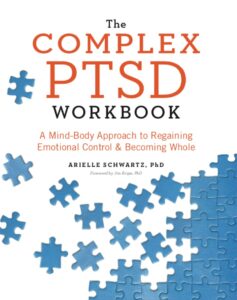 Marie’s Story* How EMDR Can Change Your Life
Marie’s Story* How EMDR Can Change Your Life*Marie is not an actual person, but a composite of several patients Dr. Schwartz has seen over the past several years. Identifying details have been changed to protect their privacy. The treatments and outcomes are real.
Phase 1 – Taking a In-Depth History
Marie had been date raped while in college. Now as an adult, Marie is suffering from anxiety and finds it challenging to develop a meaningful long term relationship. She had been in talk therapy for some time without success. In fact, she never really dealt directly with the trauma surrounding the incident. Marie was very skilled at avoiding dealing with the trauma of this incident.
In order to continue to function after a traumatic event, as a coping mechanism, it is common to bury or avoid dealing with the painful feelings or memories. I will take a thorough life history to provide the foundation for successful EMDR treatment. History taking includes life events, family systems and the strengths and resources that are currently available.
Phase 2 – Preparation for EMDR
Marie had lost a sense of choice or control over her emotional life. She felt flooded with anxiety and needed some resources to help her fell safe again. In our therapy I helped Marie identify times and places in her life where she felt safe. We also gave her tools to use between sessions to help her manage her anxiety. When Marie came back for her next session, she shared that she felt calmer and more in control of her emotions throughout the week.
As we prepare for EMDR therapy, you will build your own tool kit to help you manage overwhelming emotions and your reactions to stressful events. In addition, you will choose the form of bilateral stimulation that works best for you. The methods used are: eye movements, tactile sensations, or bilateral sounds.
Phase 3 – Assessment and Setting an EMDR Target
Marie realized that the rape had a much more profound impact on her life than she had ever allowed herself to feel. She understood that she had internalized the helplessness of that moment and would repeatedly feel helpless when faced with triggering stressful situations at work with her boss and when she was home alone in the evenings. She recognized that she had compensated for the vulnerability she was feeling by pushing people away when they wanted to get close.Marie identified that she wanted to feel capable of taking care of herself and she wanted to allow herself to develop a loving nurturing relationship.
At this point in EMDR treatment we will identify the trauma that will be worked on during desensitization. This trauma is referred to as your target and we will identify the image, emotions, beliefs and body sensations that are associated with that event.
Phase 4 – Desensitization
Using bilateral eye movements, I asked Marie to think about the rape and the image that represented the worst part of her experience Marie noted that she felt disconnected and numb when she thought of the event. Through careful pacing she began to tolerate the vulnerable and uncomfortable emotions that came up when she thought about the rape. As Marie began to feel the emotions she had a series of memories come forward about what happened that day and associations to other times in her life when she felt helpless. Eventually Marie was able to think about the rape without experiencing any upsetting feelings or thoughts. Furthermore, she began to feel stronger in herself and arrived at a sense of how this event contributed to who she is today.
We know that trauma is primarily stored in both the limbic or mid-brain and in the right hemisphere of the brain. However, we need our entire brain to access the integrative functions of reflective thought and meaning making in order to heal from trauma. By using bilateral stimulation, we rhythmically alternate between the two hemispheres of the brain while thinking about the traumatic event. This process allows the associations, feelings and memories from the past to be brought forward so they can be experienced and resolved. Desensitization of a target can occur in a single session or across multiple sessions.
Phase 5 – Installation
Now Marie was able to think about the rape and feel strong and in control. She recognized that what happened was not her fault and there were changes she could make in how she approached the world today that reflects this new experience of herself. Marie thought about being home alone and the vulnerability she used to feel and allowed a new sense of strength of to infuse her being. She felt more open to the possibility of taking the risk associated with allowing someone to get close to her. She visualized what this would look like in her life today.
During the Installation Phase, I guide you to connect the positive beliefs and sense of self that is achieved through the successful completion of desensitization. We have you imagine the past and present life triggers as you would approach them with this new found sense of capability.
Phase 6 – Body Scan
I invited Marie to scan her body for any lingering areas of tension and to allow any residual distress to release.
We use the body as a gauge to verify the successful completion of the EMDR process.
Phase 7 – Closure
Before leaving the session, I made sure that Marie felt grounded and complete with that day’s process.
Closure is essential to successful treatment in that it allows the challenging work of desensitization to be contained between sessions. Containment is built upon an agreement that we will return to address any remaining distress associated with the traumatic event. This also frees you up by asking you not to think (worry, obsess) about traumatic material between sessions.
Phase 8 – Re-evaluation
In the following session, I asked Marie to check in about how she feels now when she thinks about the rape. Marie shared that she no longer felt any disturbance. She also spoke about feeling lighter throughout the week and that she felt less unprovoked anger toward her boyfriend.
The purpose of re-evaluation allows us to assess the effectiveness of the treatment and address and residual or unresolved feelings.
In Marie’s case EMDR was a very successful treatment of choice. While it is not for every client or every presenting condition, EMDR has been well researched and is considered an evidenced based trauma treatment.
Additional Reading:

Connect to this post? The Complex PTSD Workbook, is now available on Amazon! Click here to check it out and increase your toolbox for healing. Whether you are a client or a therapist this book will offer a guided approach to trauma recovery.
Dr. Arielle Schwartz is a licensed clinical psychologist, wife, and mother in Boulder, CO. She offers trainings for therapists, maintains a private practice, and has passions for the outdoors, yoga, and writing. Dr. Schwartz is the author of The Complex PTSD Workbook: A Mind-Body Approach to Regaining Emotional Control and Becoming Whole. She is the developer of Resilience-Informed Therapy which applies research on trauma recovery to form a strength-based, trauma treatment model that includes Eye Movement Desensitization and Reprocessing (EMDR), somatic (body-centered) psychology and time-tested relational psychotherapy. Like Dr. Arielle Schwartz on Facebook, follow her on Linkedin and sign up for email updates to stay up to date with all her posts.

Arielle Schwartz, PhD, is a psychologist, internationally sought-out teacher, yoga instructor, and leading voice in the healing of PTSD and complex trauma. She is the author of five books, including The Complex PTSD Workbook, EMDR Therapy and Somatic Psychology, and The Post Traumatic Growth Guidebook.
Dr. Schwartz is an accomplished teacher who guides therapists in the application of EMDR, somatic psychology, parts work therapy, and mindfulness-based interventions for the treatment of trauma and complex PTSD. She guides you through a personal journey of healing in her Sounds True audio program, Trauma Recovery.
She has a depth of understanding, passion, kindness, compassion, joy, and a succinct way of speaking about very complex topics. She is the founder of the Center for Resilience Informed Therapy in Boulder, Colorado where she maintains a private practice providing psychotherapy, supervision, and consultation. Dr. Schwartz believes that that the journey of trauma recovery is an awakening of the spiritual heart.